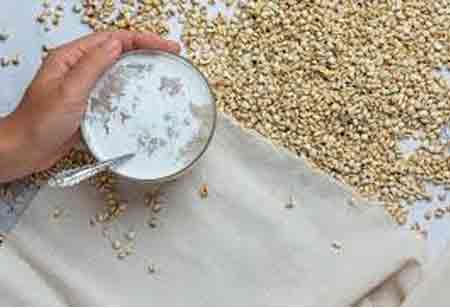THANK YOU FOR SUBSCRIBING
Be first to read the latest tech news, Industry Leader's Insights, and CIO interviews of medium and large enterprises exclusively from Food and Beverage Tech Review
Applications of Yeast Extract on a Day-to-day Basis
Consumer demand for wholesome, nutritious, and secure food has consistently scaled as living standards in most nations have increased.

By
Food and Beverages Tech Review | Tuesday, March 28, 2023
Stay ahead of the industry with exclusive feature stories on the top companies, expert insights and the latest news delivered straight to your inbox. Subscribe today.
Yeast extract is a product prepared mainly from waste brewer’s yeast, which is rich in nucleotides, proteins, amino acids, sugars and a variety of trace elements, and has the advantages of low production cost and abundant supply of raw material.
FREMONT, CA: Consumer demand for wholesome, nutritious, and secure food has consistently scaled as living standards in most nations have increased. Yeast extract, which is healthy and safe, is currently regarded as a high-quality, all-natural product that can satisfy a variety of food flavour requirements and provide vital dietary components. The water-soluble extract made from yeast waste streams after the cell membrane has been damaged by various methods is typically referred to as yeast extract. Yeast extract, also called yeast hydrolysate, is classified as generally recognised as safe (GRAS) by the majority of food safety certification authorities worldwide.
The global market for yeast extracts has grown rapidly due to their distinctive nutritional and biochemical characteristics, as well as their low manufacturing costs. They are extensively utilised in biotechnology, food, cosmetics, medicines, and animal feed.
The elements found in yeast extract, which are frequently utilised as food flavourings, food additives, and dietary nutritional supplements, include amino acids, peptides, vitamins, minerals, nucleotides, and other nutrients. Yeast extracts are widely used in nutritional foods because they contain up to 40 per cent of the total amino acids that are essential amino acids, which satisfies the UNFAO and WHO guidelines for the level of essential amino acids in healthy diets.
Yeast extracts are frequently used as a feed supplement for chickens and have long been acknowledged as a reliable source of nutrients in animal feed. They can be made to contain a lot of polysaccharides like mannan, chitin, and glucan, which are great for aquaculture and poultry breeding and improve the immune system in poultry. In the future, protein-replacement yeast extract will likely be used in poultry feed. As feed for farmed shrimp, yeast extract and fish meal were mixed in various ratios. Although no significant weight gain was noticed, the digestive protease activity and feed conversion rate of the shrimp increased as the yeast extract proportion was increased, demonstrating that yeast extract can replace up to 45 per cent of fish meals and significantly lower feed costs. Yeast extract is a nutritional supplement and immunomodulator with significant potential to replace traditional protein components in animal feed.
In particular for auxotrophic strains, yeast extract is an appropriate nutritional growth medium for both laboratory and industrial microbial fermentation since it is a rich source of amino acids, vitamins, nucleosides, polypeptides, and minerals. Yet, even little variations in the yeast raw material and the manufacturing procedure can have a significant impact on the extract's chemical makeup. In light of these factors, it is essential to select an extract that is suitable for the organism of interest carefully.
Cosmetics provide the foundation of a sizable and lucrative industry, but they frequently have efficacy and safety issues, necessitating great caution and extensive research whenever new components are added to cosmetic goods. The amino acids, polysaccharides, polypeptides, proteins, and other ingredients in yeast extract have positive biological benefits when applied topically, including hydrating the skin, encouraging cell regeneration, delaying skin ageing, and speeding up wound healing. To obtain the intended cosmetic effects, yeast extract is mixed with other ingredients like vitamins, moisturisers, and antioxidants. Yeast extract promotes cell regeneration, therefore it has tremendous promise for minimising photoaging and oxidative stress in the skin.
The manufacture of yeast extract is done on a vast scale all over the world, and yeast has a history dating back 70 years. The majority of production is currently employed in relatively low-value applications, like animal feed and microbiological culture, even if the development of new, high-value applications for yeast extract is progressing. To optimise the high-value application potential of yeast extract, significant more development is still required in the fields of nutritional supplements, medicine, and cosmetics.
I agree We use cookies on this website to enhance your user experience. By clicking any link on this page you are giving your consent for us to set cookies. More info







